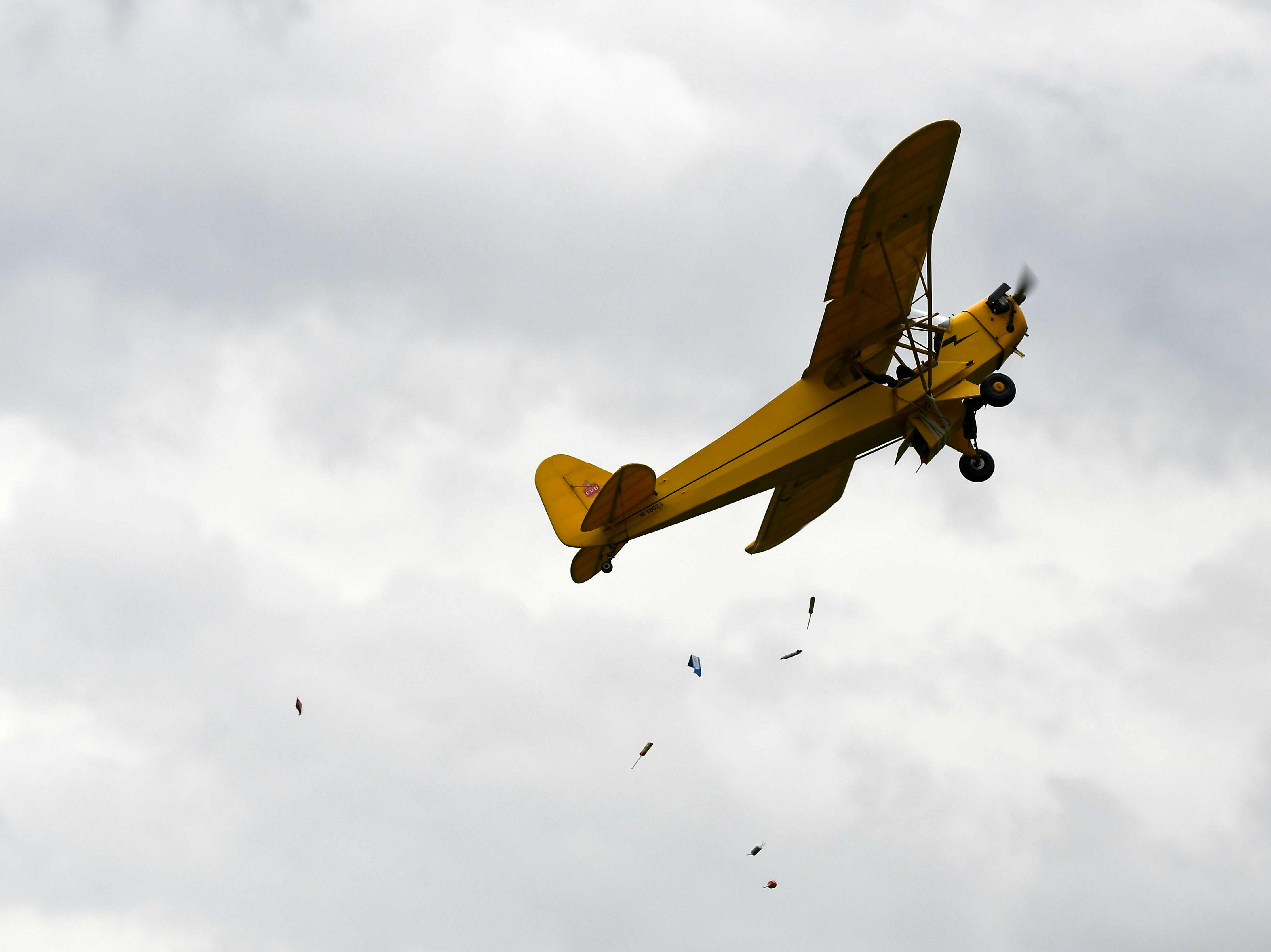-
Posts
13,409 -
Joined
-
Days Won
25
Martin Harris - Moderator last won the day on March 2
Martin Harris - Moderator had the most liked content!
Recent Profile Visitors
Martin Harris - Moderator's Achievements
2.3k
Reputation
-
Unstable model
Martin Harris - Moderator replied to Glenn Philbrick's topic in All Things Model Flying
Mine came in very handy for setting up my 1/4 scale Cub which has functional struts and scaleish construction where the washout is controlled by them! -
Unstable model
Martin Harris - Moderator replied to Glenn Philbrick's topic in All Things Model Flying
A rearward C of G seems the likely cause to me. Excessive incidence would make it want to dive when inverted. Thrust line is easy to diagnose as the trim will alter significantly with power changes. In the absence of any experienced opinion of this particular model (SEA-237B?) perhaps try their suggestion of 10mm forward (i.e. 110mm from the l.e. at the wing root). -
Ultrasonic cleaners.
Martin Harris - Moderator replied to john stones 1 - Moderator's topic in Gadgets and Electronics
Odd - my Maplin sourced one looks identical but is branded “James Products”. However, it’s always worked ok and with the relatively recently discovered carburettor cleaner, very well. Dirt streams off and small particles seem to emerge readily from hidden places. You do need to avoid leaving aluminium in the solution too long if you don’t want it to darken. -
Ultrasonic cleaners.
Martin Harris - Moderator replied to john stones 1 - Moderator's topic in Gadgets and Electronics
Although based on exciting water molecules to cause micro bubbles, I’ve found that use of a suitable cleaning fluid is important for good results. -
Welcome to the forum. I have no idea whether Outrunner still has this for sale after nearly 2 years (or perhaps someone else with a similar model) or how practical it would be to ship it to you but as a new forum member, don’t be surprised or offended if any seller wants to ensure payment has cleared before dispatching goods.
-
PM sent
-
Posting an Event onto the Calendar
Martin Harris - Moderator replied to Pete 1953's topic in All Things Model Flying
Pete, I’m not sure why your request has slipped through the net but I’ll send a reminder to Beth Ashby, who deals with these matters. Please give it a day or two and if there’s still any problem, perhaps drop her a PM. -
Forum Slow to Respond
Martin Harris - Moderator replied to Peter Jenkins's topic in Report A Problem
No problem for me. -
Four stroke engine loosening prop
Martin Harris - Moderator replied to david james 1's topic in IC Engines
It is probably not the case here but your definition of “dare” could have some significance. I have noticed many times that people don’t fully tighten prop nuts. My standard advice is to apply enough pressure to a properly sized spanner to make your eyeballs bulge! Proper prop nuts and shafts will not strip under these conditions. I also tighten the locknut against the main nut i.e. I only use a spanner on the locknut while holding the prop, rather than bracing the main nut with a spanner, in case the thread “snugging” relaxes the pressure on the driver by a fraction. I might have missed it but if not, what type of prop are you using? I had similar symptoms on a well used OS40FS in a Puppeteer with a light wooden propeller, the slightest hint of pinking when leaning out would have the prop off. Changing to a APC of the same dimensions tamed “the beast”. -
Four stroke engine loosening prop
Martin Harris - Moderator replied to david james 1's topic in IC Engines
That’s unusual Paul. It’s often caused by too lean a mixture leading to pre-ignition. Lightweight wooden props can exacerbate the situation due to lack of flywheel effect, as can excessive compression and higher nitromethane percentages. -
Four stroke engine loosening prop
Martin Harris - Moderator replied to david james 1's topic in IC Engines
What type/sixe propeller are you using? What fuel?




